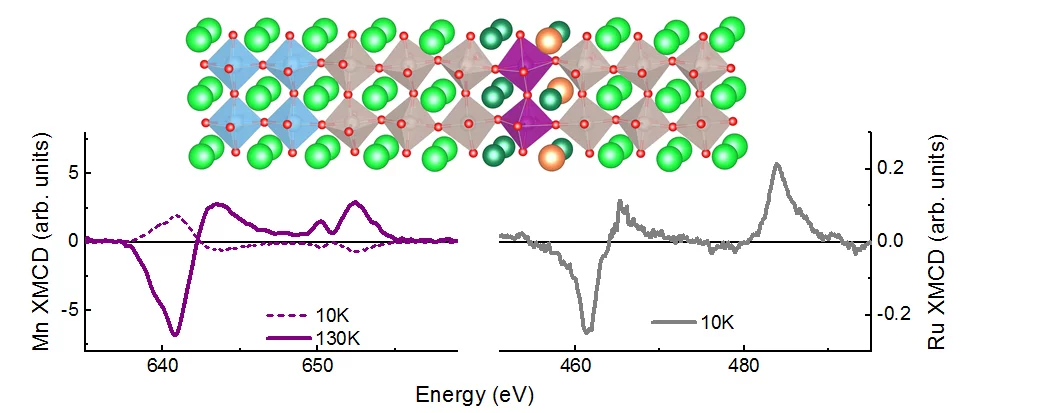The authors demonstrate the stability of ferromagnetic order of one unit cell thick optimally doped manganite (La0.7Ba0.3MnO3, LBMO) epitaxially grown between two layers of SrRuO3 (SRO). LBMO shows ferromagnetism even above SRO Tc. Density Functional Theory calculations help understand the reasons behind this interesting result.
By the employment of x-ray magnetic circular dichroism we show that 1 u.c. thick LBMO has a TC value between 130K and 150K when epitaxially interfaced with two adjacent 3 u.c. thick SRO layers. This trilayer structure exhibits greatly improved ferromagnetic properties compared to a single ultra-thin film of optimally doped manganite. DFT calculations show that interfacing with SRO adjacent layers provides a 3D electronic structure to the LBMO, hindering quantum confinement effects. The strong Ru-Mn magnetic coupling also enhances LBMO TC even when SRO is already in the paramagnetic phase. In addition, SRO favourably acts like a buffer that enables LBMO octahedral rotation close to bulk values. All these effects combined contribute to the stable ferromagnetic state for ultra-thin LBMO. The results reported here demonstrate how impactful epitaxial growth is for the physical properties of perovskite oxides and that effective engineering of the properties can be obtained by the suitable choice of the substrate and buffer layers.
Contact
Dr Cinthia Piamonteze
Microscopy and Magnetism Group
Paul Scherrer Institute, Forschungsstrasse 111, 5232 Villigen PSI, Switzerland
Telephone: +41 56 310 58 55
E-mail: cinthia.piamonteze@psi.ch
Original Publication
Ferromagnetic order of ultra-thin La0.7Ba0.3MnO3 sandwiched between SrRuO3 layers
Cinthia Piamonteze, Francis Bern, Sridhar Reddy Venkata Avula, Michał Studniarek, Carmine Autieri, Michael Ziese, and Ionela Lindfors-Vrejoiu
Appl. Phys. Lett. 118, 152408 (2021) - Published Online: 15 April 2021
DOI: 10.1063/5.0043057

